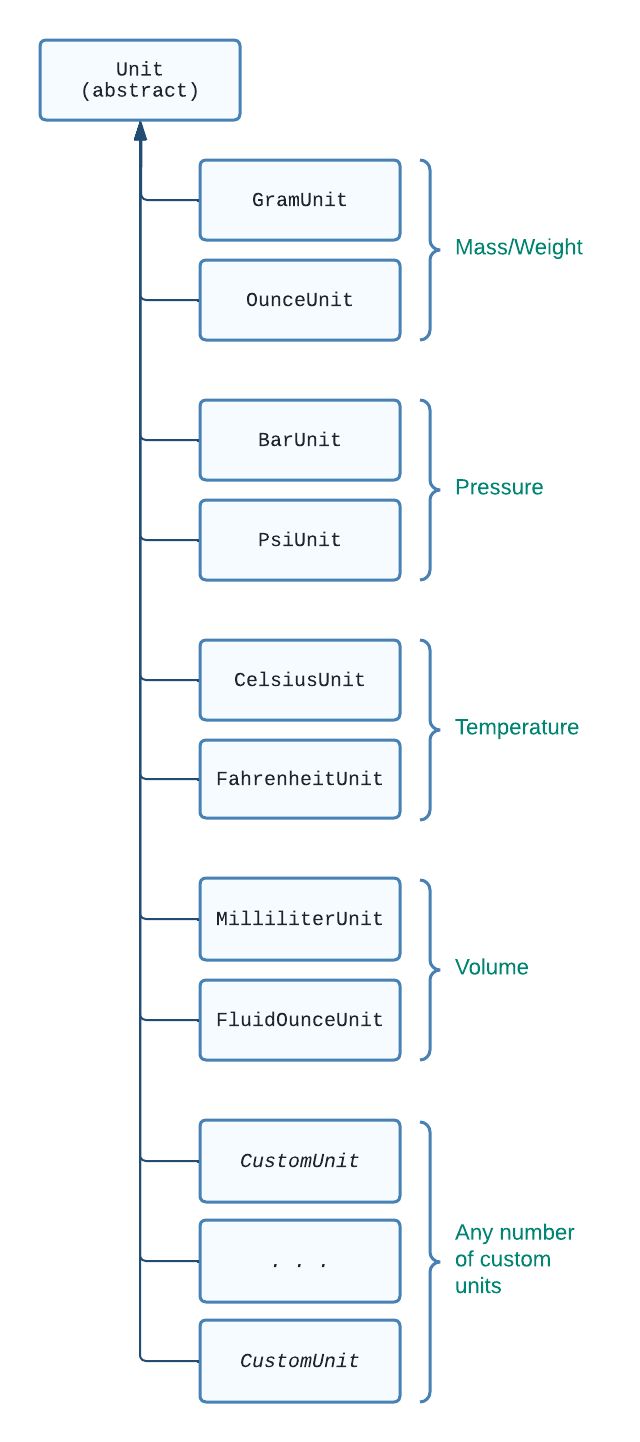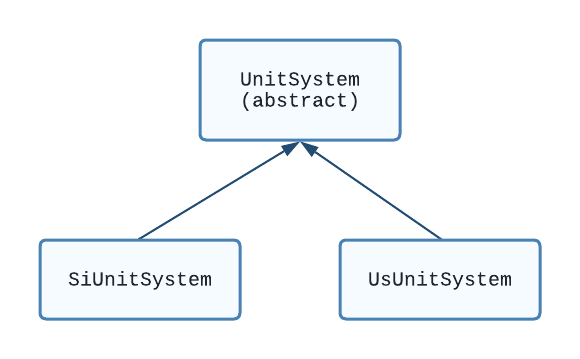
Units of Measurement
Introduction
Various quantities must be read and acted upon in any physical system. One challenge is how to keep track of the units a particular value is measured in? For example, is a temperature reading in Celsius or Fahrenheit? Is a volume measurment in fluid ounces or milliliters? In this artical, we’ll take a look at how KOS handles these issues.
Overview
This article gives a synopsis of the two main classes associated with units of measurement: Unit and UnitSystem.
Unit
The base (abstract) class that all units of measurement must extend is Unit. In KOS, there are a number of built-in units, which are shown in the following class diagram.

As you can see, it’s possible to derive your own units. For example, you could create units for "length" called "meters" or "feet".
Summary
In this brief article, we took a quick look at measurement units and systems in KOS.
For more details, please see the app note Working with Regions.
